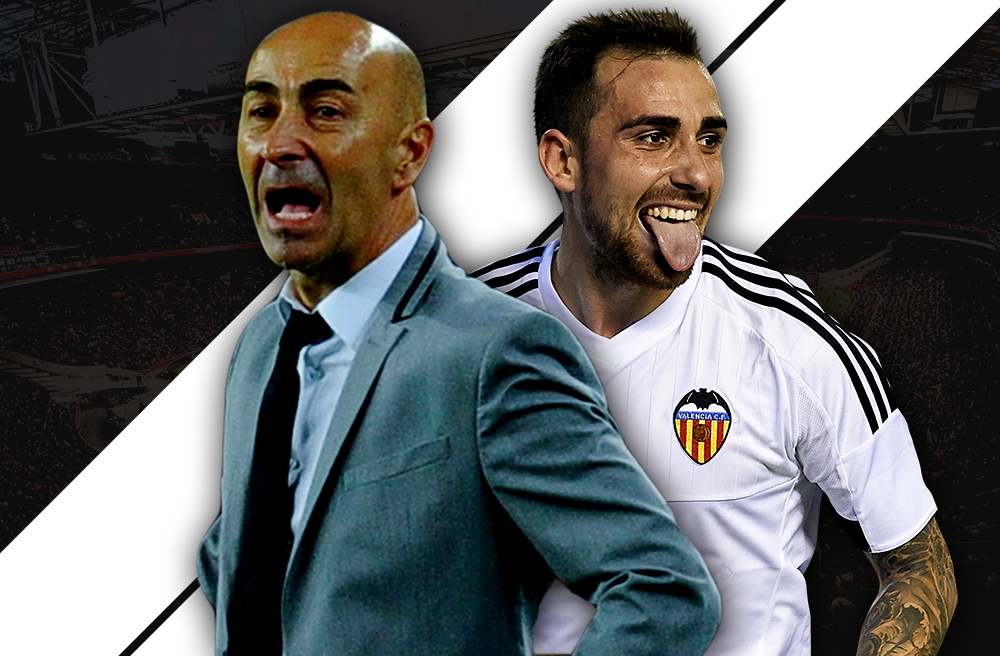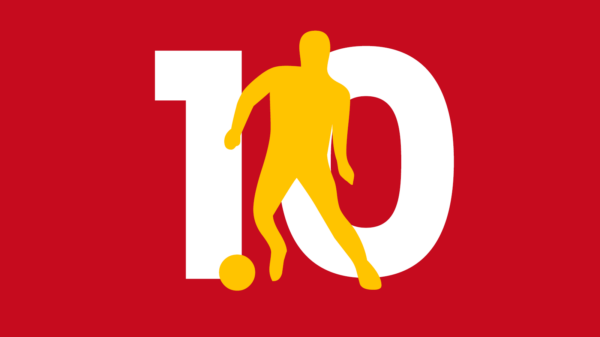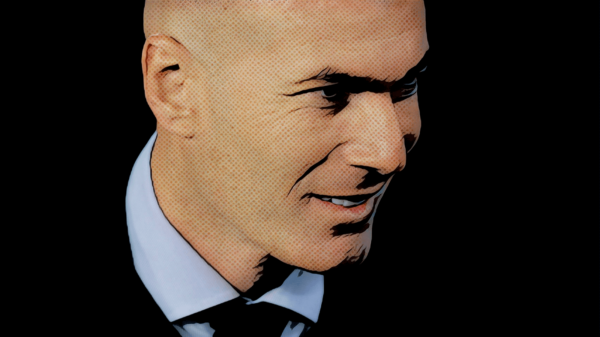
Being a football hipster is serious business with knowledge about the young starlet making waves for a non-mainstream mid table side often a prerequisite rather than a feather in the cap. To further enhance your, perhaps, burgeoning reputation as a true hipster, Outside of the Boot is on hand to provide an in-depth guide to some of the less celebrated teams around Europe. In this edition of the series, Siyang Xu has a look at Villareal.

THE PREVIOUS CAMPAIGN
The 2015-16 season was a disastrous one for Valencia, on every front. Their demise last season is particularly hard to explain, given that the club has all of the tools for success. They are the 3rd most supported club in Spain with a superb stadium, and possess a young but talented squad capable of achieving big things. The club is also well known for its academy, undoubtedly one of the best in Spain, with David Silva being the crown jewel in recent years. In recent times, the club has been in pretty dire financial straits, but not any longer – Singaporean businessman Peter Lim has a 70% stake in the club, and his injection of wealth have provided Los Che with a healthy transfer bounty for the last few years. With this in mind, last season was a huge underperformance.
In the Champions League, Valencia were eliminated in the group stage, despite having a relatively tame group of Lyon, Zenit and Gent. The league campaign was even more embarrassing for them. Los Che finished 12th – this was the club’s worst league finish since 1988. They went through a period from 22nd November to 14th February where they didn’t win a single game in La Liga, and over the course of the season, they lost more games than they won. Both their home and away form was appalling, as they only won 6 games at home in the entire season, and just 5 away from home. Some of their individual results in the league were embarrassing – they lost home and away to local rivals Villarreal, failed to beat Rayo Vallecano home and away, and even managed to lose away to Levante, who finished rock bottom of the league. The Copa Del Rey was, for much of the season, the club’s shining light. They reached the semi-finals, but even this also ended in humiliation. The semi-finals saw them face Barcelona, who thumped them 7-0 in the first-leg of the tie to kill off Valencian dreams of a Copa del Rey final. One positive about the upcoming season is that it surely can’t be any more of a disappointment than the last!
MANAGER PROFILE
The manager turntable has been spinning fiercely in the last few seasons. Last season saw the sacking of Nuno Espírito Santo and Gary Neville after continued poor league form, and the man that Peter Lim has turned to is Pako Ayesterán, who operated as an assistant under Neville.
Ayesterán is an intriguing choice. He operated as an assistant to Rafa Benítez at both Liverpool and Valencia in the early 2000’s, overseeing the development of two sets of impressive sides that played fast, free flowing, attacking football. Despite this, Ayesterán has mostly been in an assistant in his managerial career, and thus his experience as “the main man” is somewhat limited.
Ayesterán has only been in charge since March 2016, when Gary Neville was sacked. As a result, he has only overseen 8 fixtures with the club, so it is difficult to judge his time there so far. Despite losing to Villarreal at home in May, Ayesterán did oversee Valencia’s sublime counter-attacking performance against Barcelona in April, in a game which they won 2-1 at the Camp Nou. Such results would be welcomed next year, without question. One thing is in Ayesterán’s favour – expectations at the club are an all-time low, given their performances last season. Such a lack of demands from the stands next season may well help Ayesterán to thrive.
TACTICAL APPROACH
Typically, Valencia under Ayesterán set up with a narrow but fluid 4-3-3 formation, with the intention to play fast, attacking football.
One of the most important parts of Ayesterán’s formation is the fluid front-three that often interchange positions. Alcácer will start down the middle with Rodrigo on the left wing, but both are capable of playing each other’s positions. Rodrigo is much more of a number 9 than a winger, and likes to cut inside. New signing Nani will probably start on the opposing wing to offer more width (as he is a natural winger and much less of an inside forward), but he can also be considered a goal threat. Competing for his place in the XI will be Santi Mina, the young academy product. A technically sound, agile wide midfielder with an eye for an assist, Santi Mina could well be a force next season. Look for this dynamic quarter to score a heap of Valencia’s goals next season.
In midfield, Dani Parejo acts as the diminutive number 10 who is another member of the “Spanish attacking midfielders with great vision and superb ball control” club. The side’s central creative outlet, look for most of Valencia’s ingenuity to run through him in one way or another. Aside from Parejo, Suárez will most likely act as the disciplined holding midfielder, giving the likes of Parejo the freedom to roam in front. Pérez, meanwhile, will act as the box-to-box ball carrier, providing the key transition from attack to defence.
The back four is pretty much set in stone, barring any departures. Abdennour and Mustafi are two solid and reliable centre halves, and Gayá and Cancelo are two superb options in the full back position, with both attacking and defensive qualities. Although Diego Alves is an established goalkeeper, this back four is young, and this inexperience may have let them down last season. However, with youth comes potential, and you cannot argue that this isn’t a very exciting back line for the future.

Made using TacticalPad
TRANSFER MARKET ACTIVITY
Los Che have been extremely busy in the transfer market this summer – not necessarily out of want, either.
On the departures front, the biggest loss is without doubt André Gomes, who has gone to Barcelona for a fee of around £30m. Given today’s inflated transfer market, this is quite a steal for Barcelona, as Gomes is exactly the kind of midfielder that suits their mould. Clearly, Luís Enrique views him as a successor to Xavi or Iniesta in central midfield, as they are all very similar players – accurate passers with great vision, astute dribblers and extremely composed. From Valencia’s perspective, losing Gomes is a huge blow, as he was by far their best midfielder in recent years. Not just this, but Valencia are pretty short in the midfield department anyway, so they will feel his absence for sure.
Aside from Gomes, there have been a couple of other departures of note. Soufiane Feghouli, the tricky attacking midfielder, has joined West Ham on a free transfer. His sale is something I don’t really understand, largely because Valencia didn’t receive a penny for him, and on his day he is a player with immense ability. Valencia’s clear-out upfront continues with the loan of Álvaro Negredo as well as the sale of fringe player Barragán to Middlesbrough (a particularly strange transfer for someone of Negredo’s ability!), the loan of Pablo Piatti to Espanyol and the sale of Rodrigo De Paul to Udinese. Although Piatti and De Paul both had very average seasons last year, they were both impressive the season before. De Paul is also only 22, and therefore has lots of time to improve. Will Valencia regret letting so many players upfront go?
Valencia’s squad for this upcoming season will also exlude a couple of important players that were on loan at the club last season. Danilo and Denis Cheryshev were both very promising for Los Che in 2015-16, but have gone back to their respective clubs for the upcoming season. Their absence next year could well be felt – especially Danilo, who provided much-needed solidity in holding midfield last season.
Thankfully for the fans of Los Che, it hasn’t all been one-way traffic this summer. There have been a couple of notable arrivals – Martín Montoya joined the club from Barcelona as part of the André Gomes deal to add depth at full-back. Mario Suárez has also joined the club from Watford on loan, perhaps to fill the hole in defensive midfield that Danilo’s absence has created. The most impressive acquisition though is Nani from Fenerbahce for a mere £7m. Scintillating on his day, and with an impressive Euros behind him, Nani could prove to be a revelation for Los Che. Nani has always been on the cusp of being a brilliant footballer, but his problem has been consistency. If he can be relatively consistent next season, Valencia have a real weapon on their hands.
KEY PLAYER
Paco Alcacer: After André Gomes’ departure to Barcelona, my award for Valencia’s key player shifts to Paco Alcácer. He still needs to work on his finishing, and his goals-to-games ratio is not particularly special, but there is more to playing the number 9 role than just scoring goals. Alcácer has brilliant movement, and always seems to pop up in the right areas at the right time. He is also a very good dribbler, making him versatile. This means he can play in other positions in the Valencian front three if needed. Further to this, he also has great vision as a number 9, and is great at linking up play. Also, it is important to remember he is only 22, and very few strikers in world football are prolific at that age. For his age, he is an extremely intelligent footballer, and the fact that his finishing is most likely not his best asset at the moment makes him a compelling player to watch. He has huge potential, and with regular game time assured next season (barring injury) I can only see him getting better and knocking on Morata’s door to be Spain’s first choice number 9.
TALENT RADAR KEY YOUNG PLAYER
Jose Gaya: Valencia are blessed with numerous young talents – Santi Mina and Alcácer are two of the club’s biggest prospects, and as academy graduates, loved by the home faithful. However, for me, the most important youngster for Los Che is Gayá, one of the most exciting left backs in world football.
Another academy product, Gayá has become a mainstay in the Valencian XI over the last couple of years. Dependable, quick, an accurate crosser, excellent going forward, and also strong in the tackle, Gayá is everything you’d want from a modern day full-back. The position has become a lot more attack-focused in recent years, and modern day full-backs are often judged on their attacking abilities just as much as their defensive work. The beauty with Gayá is that he is very good at both – there are few full-backs in world football capable of this in reality, which makes Gayá one of the most exciting players in the world at the moment.
CONCLUSION AND EXPECTATION
It’s very difficult to predict how Valencia will fare next season. With the talent in their squad, I believe that they can push for a Europa League spot, which would require them to finish in the top 7. However, you could easily have said this at the beginning of last season, and Los Che ended up finishing 12th, just 6 points above the relegation zone. Factor in also the losses of André Gomes, Soufiane Feghouli, Pablo Piatti and the potential loss of Shkodran Mustafi to Arsenal, and they have a considerably weaker side than last season too. Although Nani has been brought in, I still feel that Valencia need to bring in at least 2-3 more players before the end of the transfer window, not least in the midfield area, where they are really short on depth. With an unproven manager, losses in the transfer market, and a very poor last season in mind, Valencia fans may just appreciate a top-half finish next season. Although, for a club of Valencia’s size and historical might, this just doesn’t feel right!
Read all our 2016-17 Hipster Guide articles here
- IFK Mariehamn: From Obscurity to Finnish Champions - December 3, 2016
- Hipster Guide 2016-17: Valencia’s tactics, key players and emerging talents - August 23, 2016
- Hipster Guide 2016-17: Sassuolo’s tactics, key players and emerging talents - August 19, 2016



























































